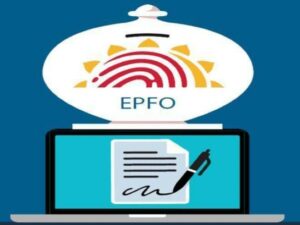What Is e-Mandate?
While availing a personal loan, there was a time when the repayment needed to be done through cheques. The bank or financial institution would create physical mandates for loan repayments. This was applied to both secured and unsecured loans.
In simple words, the application of loan, documentation, disbursement and repayment involved a lot of paperwork. However, this is no longer the case. Individuals can now apply for an instant loan and upload the documents through a personal loan app as well.
This is also applicable for repayments, which is precisely where an e-mandate comes in. For first-time loan applicants and credit card users, e-mandate is a new concept. Let’s move further and understand what is e-mandate and how does it help you.
A mandate is a standing instruction that is issued to the bank or financial institutions that allows them to debit a precise amount on recurring payments from an individual’s bank account.
The e-mandate meaning is similar to the definition of a mandate. It is an electronic version of the mandate that was set up by the National Payments Corporation of India and RBI, which provides an IT infrastructure to businesses to help them collect recurring payments from their clients in India.
What are the Benefits of an e-Mandate?
- Hassle-free Process: The entire e-mandate registration and the process is simple and seamless. All the applicant needs is a bank account with net banking access. This process is a one-time process, thus making future payments hassle-free. Also, if there are any further changes to the bank account, the applicant can have it done without having to visit the branch.
- Time-Saving: One of the drawbacks of the physical mandate process is that verification would take time. From the time the form was duly filled, submitted and approved, it would take weeks for the lender to start the auto-debit process. However, this is not the case with e-mandates. The e-Mandate form can be approved within a matter of hours.
- Pan India presence: e-mandates make it easier for you to make pan Indian payments. Hence, it does not matter if you reside in one state and need to make recurring payments in another. All you need to do is follow the eMandate process and registration, and continue making payments.
- Increase customer retention: During your e-mandate registration, you will receive a one-time password (OTP). With this one-time authentication, lenders, services, and businesses can auto-debit the amount due from the applicant’s bank account. This means that the customer can reap the benefits of service without interruption. Moreover, the customer does not need to keep making physical payments against the service, thus increasing customer retention and building loyalty.
- Track transaction: Being a digital process, customers can track every transaction as it is captured online. This helps in reconciliation and avoids the usage of multiple cards and tools.
What are the Different Types of e-mandate?
- Fixed e-mandate: Under the fixed e-mandate model, the customer has to pay a presided amount or fee after a specified period. For instance, the EMI on your unsecured loan of Rs. 5000, which gets debited on the 25th of every month.
- Variable e-mandate: Under the variable model, the customer will register the e-mandate that specifies variable payments to be made. For instance, if a customer is paying Rs. 5000 on the unsecured loan for the first 15 months, and then paying Rs. 7000 for the next 15 months, the e-mandate registration will have a variable payment method.
What are the new RBI Guidelines for recurring card payments?
E-mandates help make transactions easy not just for customers but also businesses. However, in October 2021, the Reserve Bank of India provided new guidelines for recurring card payments.
The new RBI guidelines mention that post October 2021, all the existing card details on merchant sites would be nullified. The customer would have to add the details again and authenticate them with a new OTP.
Further, the new guidelines mandate that customers are required to do additional factor authentication via an OTP for payments more than Rs. 5000. The customer will receive an intimation that a payment of more than Rs. 5000 needs to be made and they will have to either approve or decline.
How to register for an eMandate?
- Step 1:
You will receive an e-mandate link from your lender for registration. - Step 2:
On clicking the link, you will need to authenticate with your email ID. You also have the option to authenticate using a code sent to your email id. - Step 3:
While choosing option 2, you will receive a code on your email that has to be entered. - Step 4:
Once submitted, you will be shown a page that shows Create Mandate, where all your details will be mentioned. This will include the customer name, bank name, bank branch, account number, account type, amount to be debited, and maximum time of debit. - Step 5:
At the end of the page, you will see the option to verify using net banking or debit card details. - Step 6:
If you choose net banking, your details will be shown again and you will be asked to either accept or reject them. - Step 7:
On accepting, you will be directed to the net banking page of your bank. - Step 8:
On this page, enter the transaction code and your e-mandate is verified via net banking. - Step 9:
If you are using your debit card, you will be shown your debit card number, name on the card, expiry of the card, amount to be debited, and the maximum time of debit. - Step 10:
You will receive an OTP on the registered number and once authenticated, you will receive the final status as verified.
E-mandate for Loan Repayments
E-mandates not only make payments to businesses easier but also to lenders as well. When you apply for an online loan through a personal loan app, you can also register for an e-mandate.
Financial institutions like Finnable have a simple e-mandate registration process. Using Finnable’s loan app, you can avail a personal loan for weddings, medical expenses, travel, etc. You can also use this app to not only check your EMI amount but also create the e-mandate once the loan is approved. Finnable’s e-mandate process is quick, simple and easy, just like availing an unsecured loan.
Learn with Finnable
People also search for
Personal Loan Document | Benefits of EMI | Difference between Secured and Unsecured Loans | Personal Loan on Aadhar Card | What is Good Cibil Score | Personal Loan Rejection Reasons | Personal Loan for Cibil Score of 700 | How is Cibil Score Calculated | Personal Loan for 20000 Salary | What is Personal Loan | Personal Loan without Security | Personal Loan Reasons | Instant Loan for Low Cibil Score | Personal Loan Rate of Interest | Improve Debt-to-Income Ratio | Personal Loan Tenure | Benefits of Education Loan | Personal Loan Types | How to Buy a Bike on EMI | Features of Top-Up Loan



















